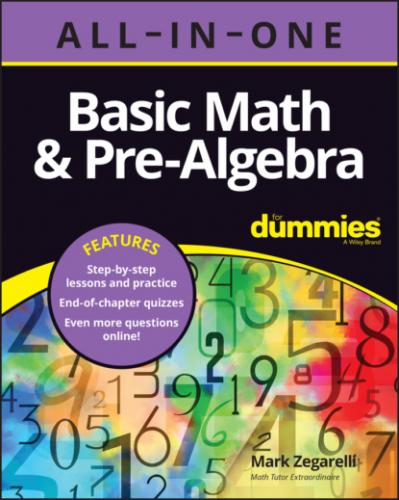Q. Solve
A. 410. The last two numbers are small, so place parentheses around these numbers:
First, do the multiplication inside the parentheses:
Now you can easily multiply
5
6 Find the value of
7 Solve the following two problems:
(a)
(b)
Do the parentheses make a difference in the answers?
8 Solve the following two problems:
(a)
(b)
Do the parentheses make a difference in the answers?
9 Solve the following two problems:
(a)
(b)
Do the parentheses make a difference in the answers?
10 Find the value of
Distribution to lighten the load
If you’ve ever tried to carry a heavy bag of groceries, you may have found that distributing the contents into two smaller bags is helpful. This same concept also works for multiplication.
In math, distribution (also called the distributive property of multiplication over addition) allows you to split a large multiplication problem into two smaller ones and add the results to get the answer.
For example, suppose you want to multiply these two numbers:
You can go ahead and just multiply them, but distribution provides a different way to think about the problem that you may find easier. Because 101 = 100 + 1, you can split this problem into two easier problems, as follows:
You take the number outside the parentheses, multiply it by each number inside the parentheses one at a time, and then add the products. At this point, you may be able to calculate the two multiplications in your head and then add them up easily:
Distribution becomes even more useful when you get to algebra in Unit 7.
A.
11
12 Multiply
13 Multiply
14 Multiply
Understanding Inequalities
Sometimes you want to talk about when two quantities are different. These statements are called inequalities. In this section, I discuss six types of inequalities: ≠ (doesn’t equal), < (less than), > (greater than), ≤ (less than or equal to), ≥ (greater than or equal to), and ≈ (approximately equals).
Doesn’t equal (≠)
The simplest inequality is ≠, which you use when two quantities are not equal. For example,
You can read ≠ as “doesn’t equal” or “is not equal to.” Therefore, read
Less than (<) and greater than (>)
The symbol < means less than. For example, the following statements are true:
Similarly, the symbol > means greater than. For example,
Notice that the < looks sort
